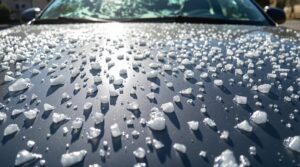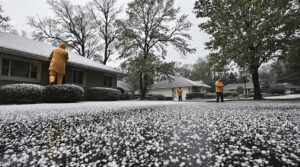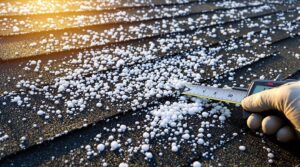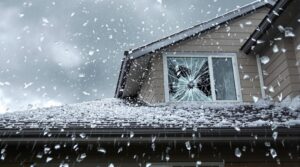Hail presents significant hazards to both human safety and property, with documented impacts ranging from minor injuries to rare fatalities. Wind-driven hailstones can reach velocities of 44-72 mph, while sizes vary from sub-inch diameter to giant specimens exceeding 2.75 inches. Annual property damage in the U.S. exceeds $1.07 billion, primarily affecting regions within "Hail Alley." Understanding hail's formation patterns, risk factors, and protective measures proves essential for minimizing exposure to these dangerous precipitation events.
Key Takeaways
- Hail causes approximately $1.07 billion in property damage annually in the U.S., particularly threatening vehicles, buildings, and agricultural crops.
- Wind-driven hail can fall at speeds between 44-72 mph, making it dangerous for anyone caught outdoors during storms.
- While hail fatalities are rare in developed nations, a significant hailstorm in India caused 246 deaths, demonstrating its potential danger.
- Large hail (>2.75 inches) can cause severe structural damage and serious injury when combined with strong winds.
- Outdoor activities increase risk during hailstorms, as demonstrated by the 1995 Dallas-Fort Worth storm that injured over 400 people.
Understanding Hail Size and Impact
The classification of hail size follows standardized meteorological measurements, ranging from small hail at less than 1 inch in diameter to giant hail exceeding 2.75 inches. Meteorologists utilize common objects for size estimation, comparing hailstones to items such as peas, quarters, and baseballs to communicate dimensions effectively.
Hail formation occurs within thunderstorm systems, where updrafts suspend water droplets until they accumulate sufficient mass to overcome atmospheric lift. The impact potential varies considerably with size: small hail primarily affects agricultural crops, while larger specimens can inflict substantial structural damage to vehicles, aircraft, and buildings.
Wind-driven hail presents additional hazards, with fall speeds reaching 44-72 mph for larger stones. Hail accumulation can compromise infrastructure, particularly electrical systems, as excessive weight strains power lines and vegetation.
The annual economic impact of hailstorms in the United States exceeds $1 billion, demonstrating the considerable meteorological threat these precipitation events pose.
The Truth About Hail-Related Deaths

While hail's destructive force can inflict substantial property damage, mortality rates from hailstone impacts remain remarkably low in developed nations. Statistical data indicates only four hail-related fatalities in the United States since 2000.
However, catastrophic events can occur, as evidenced by a devastating hailstorm in India that claimed 246 lives with hailstones comparable to goose eggs and cricket balls in size.
Historical hailstorms demonstrate the potential severity of these weather events. The 1995 Dallas-Fort Worth incident resulted in over 400 hail-related injuries, with 60 individuals sustaining serious trauma from hailstones measuring up to 4 inches in diameter.
Risk factors for hail-related injuries include exposure during outdoor activities, particularly affecting agricultural workers, recreational enthusiasts, and landscaping professionals. The most significant threat occurs during the peak season between May and September, especially in high-frequency regions such as "hail alley," where Nebraska, Colorado, and Wyoming converge.
Property and Vehicle Damage Statistics
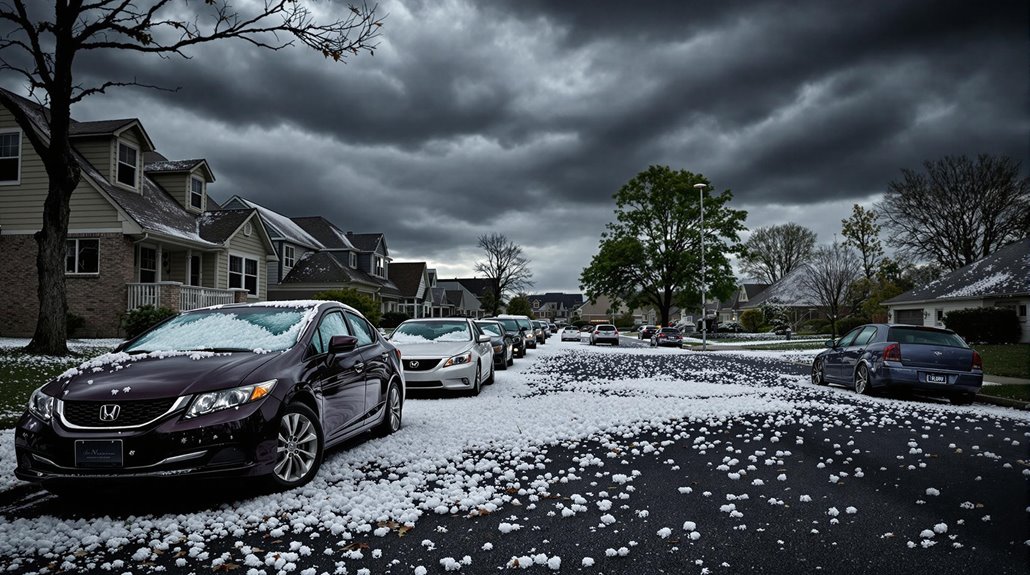
Staggering financial data reveals that hail-related property damage costs the United States approximately $1.07 billion annually, with particularly severe impacts concentrated in specific geographic regions.
Texas leads with $338.6 million in damages and 529 recorded hail events in 2024, representing a 167% increase from the previous year.
Vehicle damage assessments indicate repair costs ranging from $30 to $300 per dent, with potential cumulative expenses reaching $3,000 per incident.
Insurance coverage statistics demonstrate significant vulnerabilities, as only 51% of Texas drivers maintain adequate all-encompassing coverage for hail damage.
Nebraska exhibits the highest uninsured hail risk score of 100/100, experiencing annual financial losses of $50.8 million across an average of 206 hail events.
Analysis of insurance claims between 2013-2015 documented 2,116,980 hail loss incidents, with claim severity increasing 65% compared to previous periods.
The southwestern and midwestern regions demonstrate heightened susceptibility to hail damage, with peak claim frequencies occurring during spring and early summer months.
High-Risk Areas and Seasons
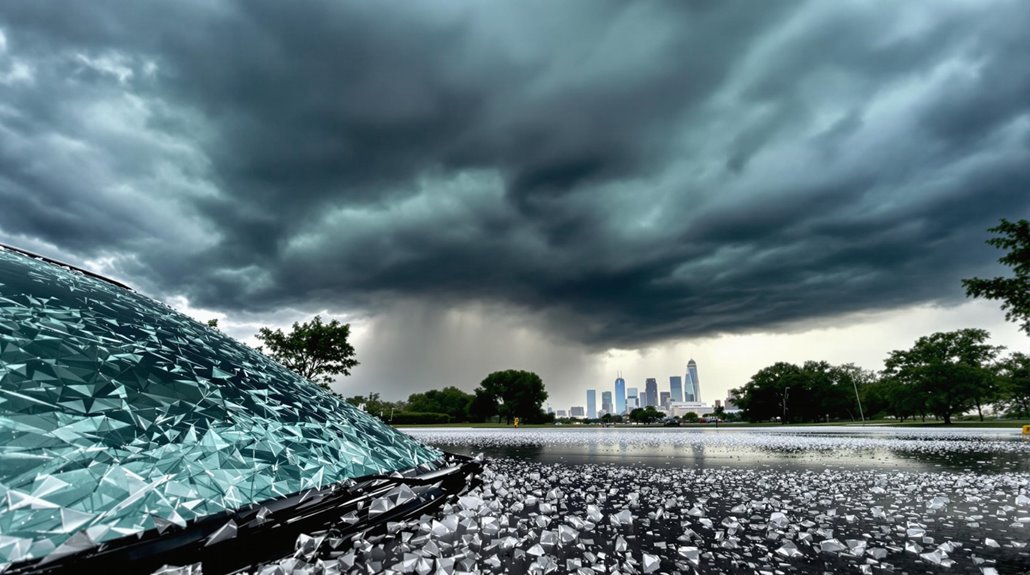
Geographic analysis reveals concentrated hail activity within specific regions of the continental United States, with "Hail Alley" – extending from Wyoming through Texas – experiencing the highest frequency of severe hailstorms.
Texas demonstrates the highest regional vulnerability, with 51 counties classified in the most susceptible category, followed by Nebraska with 52 high-risk counties.
Statistical data indicates pronounced seasonal patterns in hailstorm frequency, with peak activity occurring during spring and fall months, particularly in Texas metropolitan areas such as Dallas, Waco, and Lubbock.
These seasonal variations correlate with tornado-prone periods, establishing a clear meteorological connection between severe weather events.
Dallas County exhibits maximum hailstorm preparedness requirements, ranking as the most vulnerable jurisdiction nationwide, while Arapahoe County, Colorado, maintains the second-highest risk assessment.
The concentration of risk in specific counties necessitates enhanced mitigation strategies, especially in North Texas, where annual economic losses from hail damage reach peak levels.
Essential Safety Measures During Hailstorms
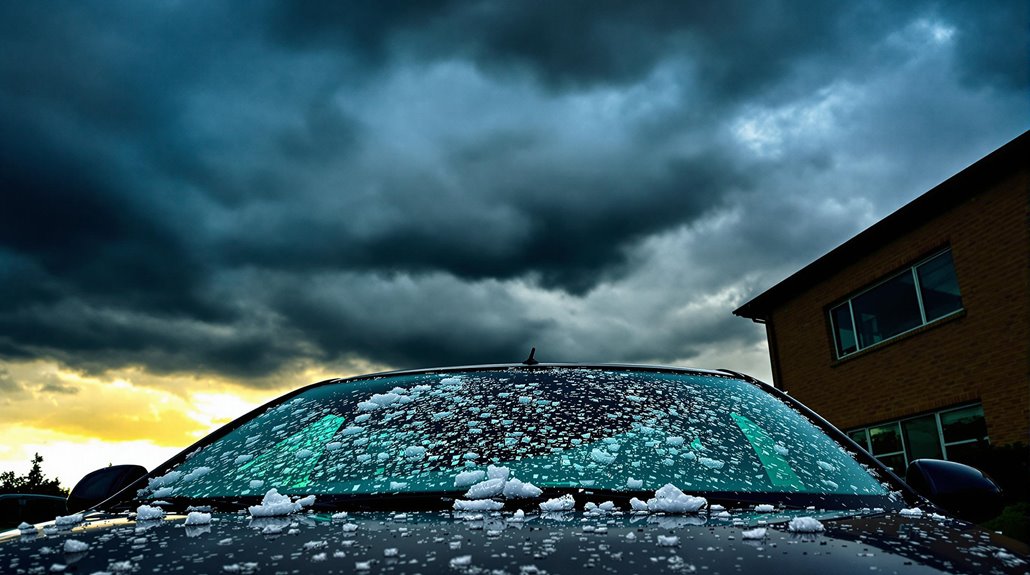
To guarantee personal safety during severe hailstorm events, individuals must implement an extensive set of protective protocols that address both immediate shelter requirements and vehicular safeguards.
When precipitation shifts to hail formation, occupants should immediately relocate to secure shelter options within reinforced structures, maintaining maximum distance from glass surfaces and window installations.
For vehicle protection protocols, operators must execute precise defensive measures. Upon encountering hailstorm conditions, drivers should reduce velocity and position their vehicles at ideal angles, utilizing the reinforced windshield as primary protection against descending hail particles.
The vehicle's orientation should prioritize minimizing impact exposure to more vulnerable side and rear glass panels.
Post-storm assessment procedures require systematic documentation of structural impacts, including photographic evidence of compromised surfaces and detailed notation of damage patterns for insurance verification processes.
This methodical approach guarantees thorough evaluation of storm-related effects on both structures and vehicles.
The Benefits Of Consulting A Public Adjuster
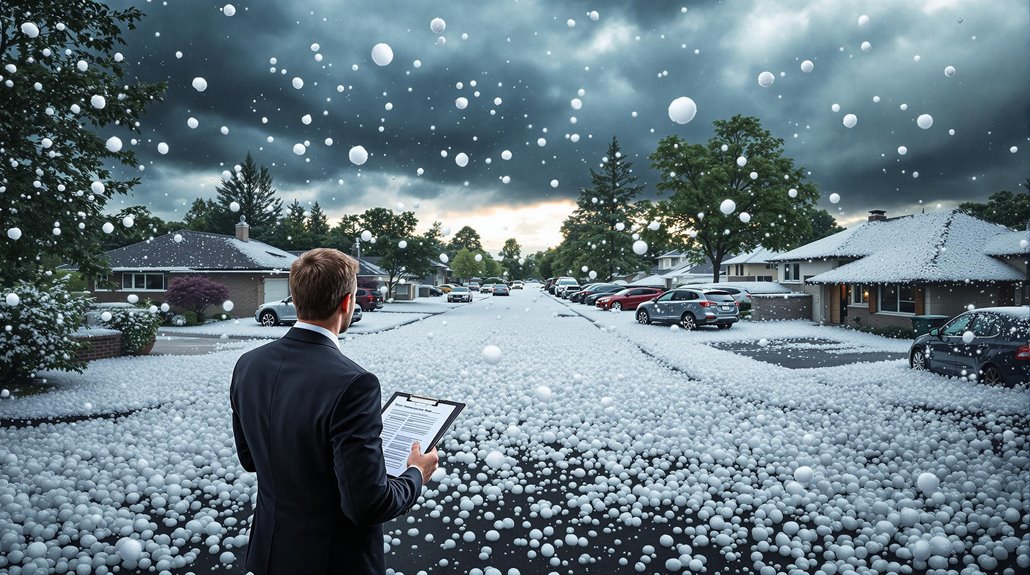
Professional public adjusters provide expertise in evaluating and documenting hail-related property damage through systematic assessment protocols and technical analysis.
Their extensive understanding of insurance policies, combined with specialized knowledge of meteorological impact assessment, enables accurate claim valuations and ideal settlement negotiations.
Public adjusters streamline the claims process by implementing standardized documentation procedures, conducting thorough damage inventories, and leveraging industry-specific expertise to secure higher compensation rates for policyholders.
Studies show that claims handled by public adjusters result in 800% higher settlements compared to those filed without professional representation.
Expertise In Insurance Claims
When dealing with hail damage insurance claims, consulting a public adjuster can greatly enhance claim settlement outcomes, with statistical evidence showing up to 32% higher compensation rates compared to self-filed claims.
Public adjusters possess thorough knowledge of insurance policy nuances and implement sophisticated claim negotiation strategies to maximize settlements.
These professionals systematically document structural impacts, analyze policy parameters, and quantify damages through methodical assessment protocols. Their expertise encompasses intricate policy interpretation, detailed damage documentation, and strategic negotiation methodologies.
Public adjusters efficiently navigate complex claim processes while ensuring all damage components, including latent issues, are properly evaluated and documented. Their specialized knowledge of insurance industry protocols and regulatory requirements enables them to advocate effectively for policyholders while expediting the settlement process through professional channels.
Unlike insurance company adjusters who protect insurer interests, public adjusters represent policyholders throughout the entire claims process to ensure fair compensation.
Objective Damage Assessment
Engaging a public adjuster facilitates an empirical, methodology-driven assessment of hail-related property damage through standardized evaluation protocols and quantitative analysis techniques.
These independent specialists utilize systematic procedures to quantify structural impacts, analyzing variables such as impact velocity, projectile diameter, and material degradation patterns.
Their thorough evaluation methodology encompasses multi-point inspection protocols, documenting both manifest and latent hail damage through precise measurements and photographic documentation.
This objective analysis generates data-supported damage assessments, essential for insurance negotiations. The adjuster's standardized approach guarantees identification of all impacted areas, including microscopic structural compromises that may lead to future deterioration.
Their scientific methodology produces empirical evidence that substantiates claims, while their expertise in insurance negotiations optimizes settlement outcomes through quantitative validation of damage extent.
Licensed professionals must maintain complete independence from insurance companies while advocating for homeowners during the claims process.
Streamlined Claim Process
Through systematic implementation of standardized protocols, public adjusters streamline the insurance claims process by coordinating multiple operational components simultaneously. Their methodological approach to claims efficiency encompasses thorough documentation management, expedited communication protocols, and strategic timeline optimization.
This systematic framework greatly reduces procedural redundancies while maintaining documentation accuracy throughout the assessment phase.
Key operational components include:
- Systematic compilation and verification of claim-related documentation
- Implementation of standardized communication protocols with insurance providers
- Coordination of multi-disciplinary assessments from contractors and engineers
- Strategic timeline management to guarantee compliance with submission deadlines
The integration of these components results in accelerated claim resolution, minimized procedural errors, and optimized resource allocation.
This streamlined methodology enables property owners to focus on essential recovery operations while maintaining confidence in the professional management of their claims.
Studies show that engaging a public adjuster can lead to settlement increases of 20-50% compared to handling claims independently.
Higher Claim Payouts & Settlements
Statistical analysis demonstrates that policyholders who retain public adjusters receive markedly higher compensation, with empirical data indicating a 574% average increase in claim settlements compared to unrepresented cases. This significant differential is attributed to the public adjusters' expertise in extensive damage assessment and strategic claim negotiation protocols.
The enhanced outcomes stem from multiple empirical factors: public adjusters' autonomous status guarantees unbiased evaluation, their commission-based compensation model incentivizes maximum recovery, and their specialized knowledge of policy terminology facilitates ideal claim documentation.
Additionally, their proficiency in identifying all qualifying damages and coordinating with restoration specialists guarantees thorough cost estimates. This systematic approach to claim management, combined with their understanding of insurance companies' assessment methodologies, consistently yields superior settlement outcomes for policyholders.
Despite these advantages, research shows that less than 5% of policyholders are aware of public adjusters' services and their potential impact on claim settlements.
About The Public Claims Adjusters Network (PCAN)
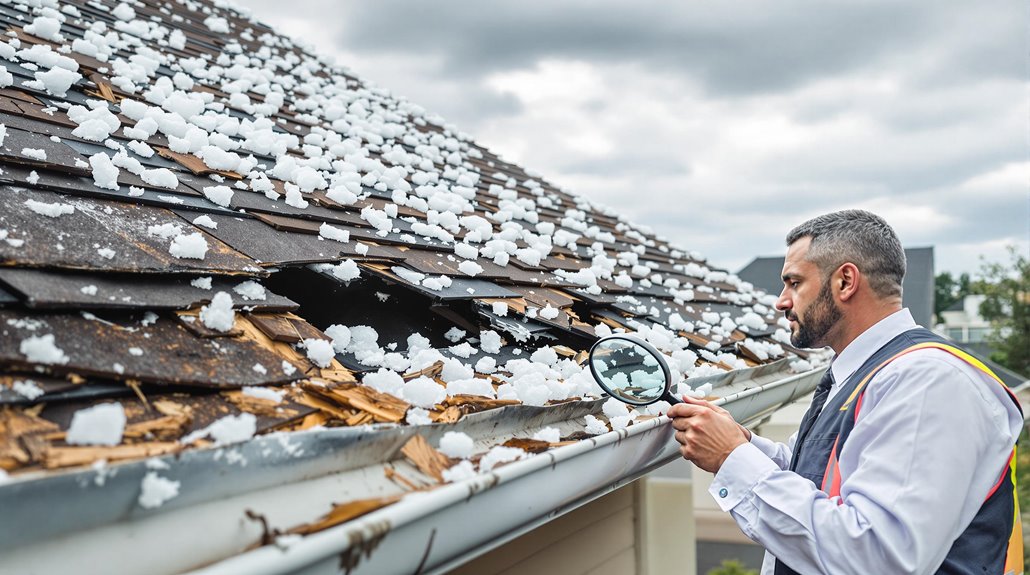
Professional claims management requires the specialized expertise of public adjusters, who operate as licensed insurance professionals within the Public Claims Adjusters Network (PCAN). These insurance specialists execute thorough public adjuster roles, from initial damage assessment through final claims negotiation, guaranteeing peak outcomes for policyholders facing property damage situations.
PCAN-affiliated adjusters deliver specialized services including:
- Policy analysis and coverage validation
- Technical damage assessment and documentation
- Forensic accounting for business interruption calculations
- Strategic negotiation with insurance carriers
The network maintains strict professional standards while facilitating complex claim resolutions through systematic protocols. Their methodology incorporates detailed documentation processes, advanced damage assessment techniques, and data-driven negotiation strategies.
PCAN members leverage collective expertise to navigate intricate policy provisions and achieve maximum claim settlements, while maintaining compliance with state-specific insurance regulations and industry standards. This systematic approach guarantees consistent, measurable results across diverse claim scenarios.
Frequently Asked Questions
Can Hail Form in Any Season, or Only During Thunderstorms?
While thunderstorms facilitate hail formation throughout all seasons, meteorological conditions primarily support development during spring through fall, with reduced probability in winter due to insufficient convective uplift.
How Long Does a Typical Hailstorm Last?
Typical hail storm duration ranges from 10-15 minutes, though severe events can persist for 30 minutes. Hail storm frequency peaks during summer months, with exceptional cases lasting several hours under specific meteorological conditions.
Does Climate Change Affect the Frequency and Intensity of Hailstorms?
Like a climate pendulum, global warming alters storm patterns, intensifying hailstorm severity in regions like Europe and Australia while reducing frequency in others, demonstrating significant regional climate variability in precipitation events.
Can Weather Radar Accurately Predict When and Where Hail Will Fall?
Weather radar systems can predict hail formation aloft, but radar limitations affect precise ground-strike locations. Dual-polarization technology enhances hail prediction capabilities while maintaining uncertainty in specific size determination.
What Is the Average Annual Insurance Premium Increase After Filing Hail Claims?
Insurance research indicates that filing hail claims typically results in a substantial 30% average annual premium increase, though variations occur based on claim severity, frequency, and geographical location.
References
- https://hazards.fema.gov/nri/hail
- https://ezautospa.com/25122/hail-damage-statistics/
- https://archive.org/stream/criticalthinking_201912/Critical Thinking_djvu.txt
- https://www.iii.org/fact-statistic/facts-statistics-hail
- https://sciencepolicy.colorado.edu/socasp/weather1/changnon.html
- https://www.accuweather.com/en/severe-weather/is-climate-change-making-hailstones-larger/1652329
- https://ibhs.org/ibhs-news-releases/as-hail-damage-continues-across-the-u-s-new-research-from-zestyai-and-ibhs-works-to-make-hail-losses-more-predictable/
- https://www.nssl.noaa.gov/education/svrwx101/hail/
- https://www.earthnetworks.com/hail/
- https://www.weather.gov/mlb/hail_threat
